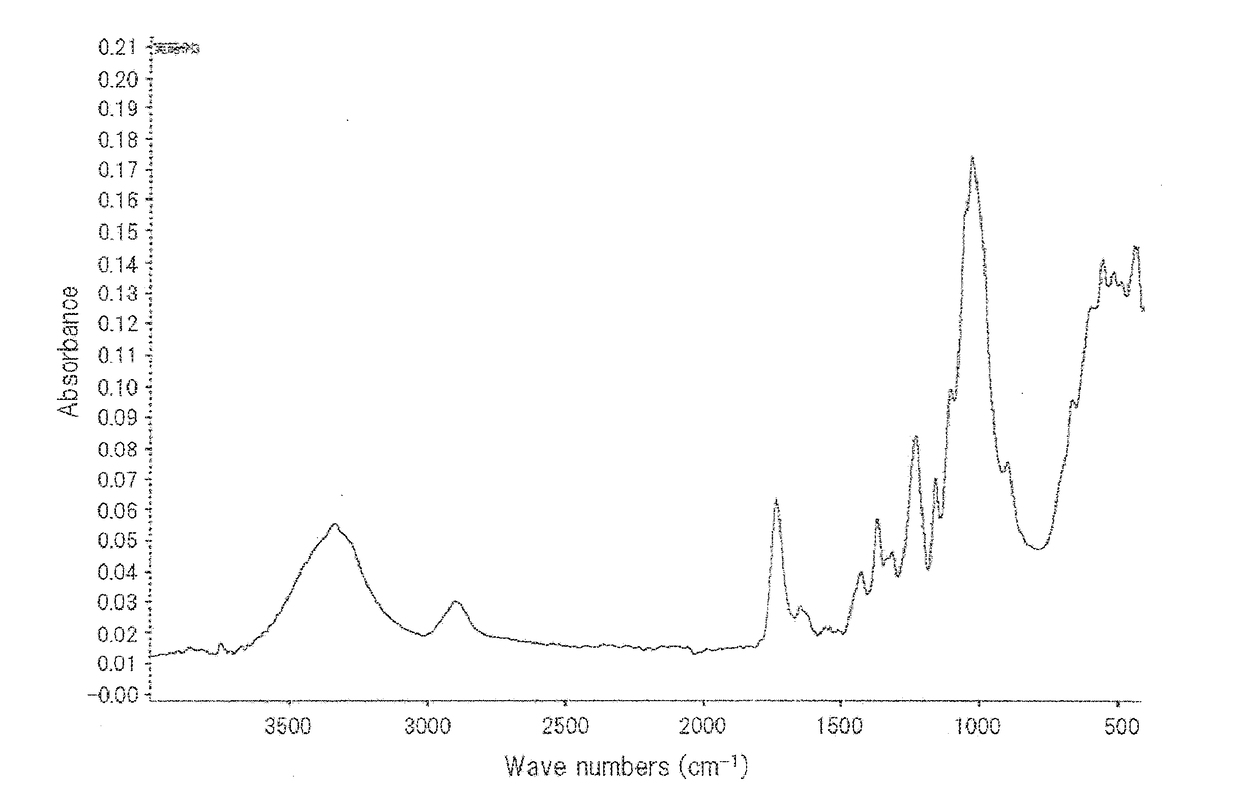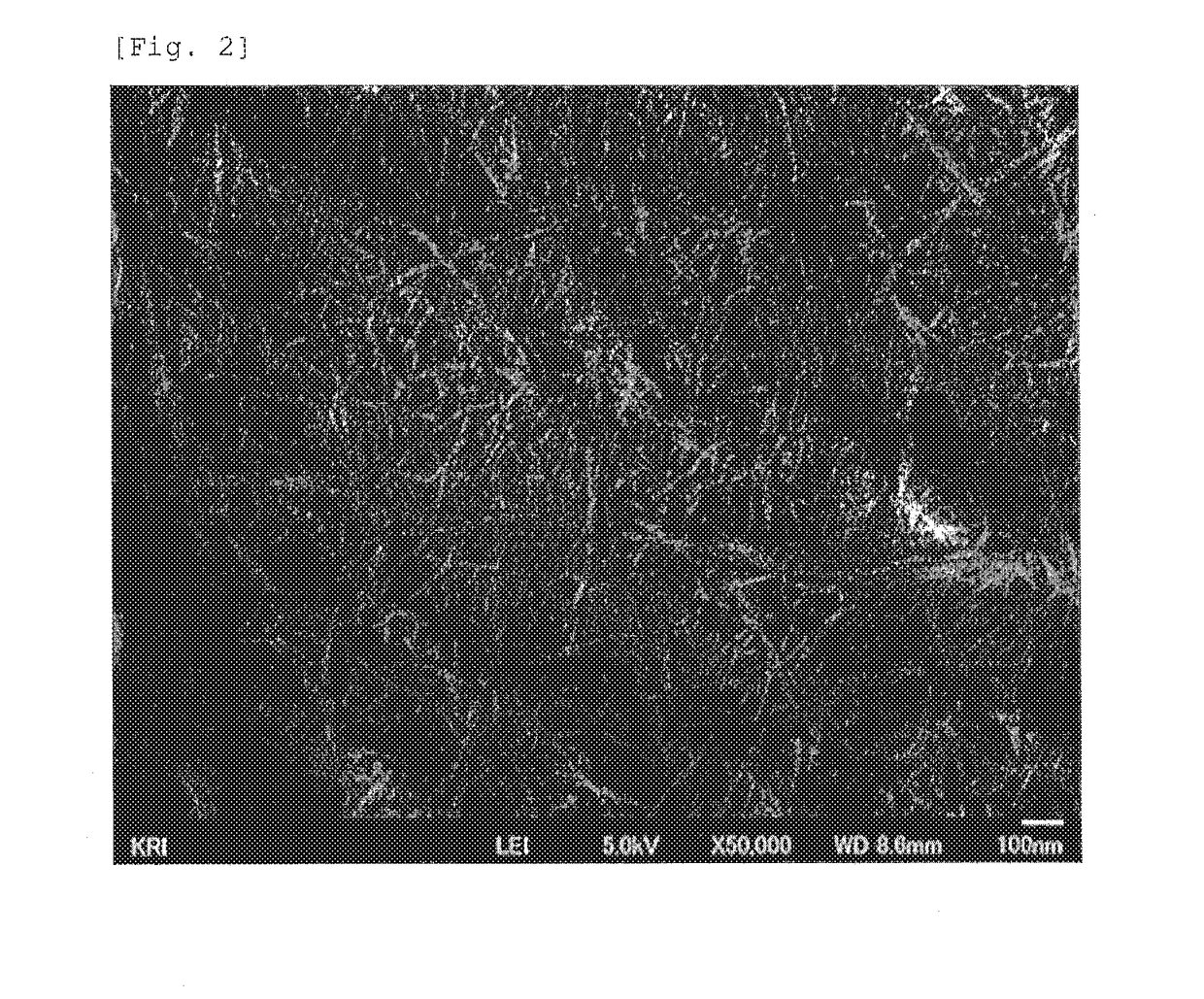Modified cellulose fine fibers and method for producing the same
a technology surface esterification, which is applied in the field of surface esterificationmodified fine cellulose fibers, can solve the problems of entanglement or roughness, inevitably breaking or dissolving the crystal structure of fine cellulose fibers, and low yield of fine cellulose fibers, and achieves improved cellulose fibrillation efficiency, high crystallinity, and simple and efficient production.
- Summary
- Abstract
- Description
- Claims
- Application Information
AI Technical Summary
Benefits of technology
Problems solved by technology
Method used
Image
Examples
example 1
[0137]In a 20-ml sample bottle, 3 g of pyridine, 7 g of DMSO, and 1.3 g of propionic anhydride were put, and the solution was stirred until the solution was mixed homogeneously. Then, 0.3 g of the cellulose pulp was added to the solution, and the resulting mixture was stirred for 24 hours and was then washed with a mixed solution of acetone and water to remove pyridine, DMSO, and residual propionic anhydride from the mixture. The solid content was collected. The average substitution degree of the resulting modified fine cellulose fibers was measured, the modified functional group thereof was determined by FT-IR analysis, the shape thereof was observed by a scanning electron microscope (SEM), the degree of crystallinity thereof was measured by XRD analysis, and the degree of fibrillation and the dispersibility in a solvent were evaluated. The results of the FT-IR analysis are shown in FIG. 1, and the SEM photograph is shown in FIG. 2. The results of the SEM observation show that the ...
example 2
[0138]In a 20-ml sample bottle, 3 g of pyridine, 7 g of DMAc, and 1 g of acetic anhydride were put, and modified fine cellulose fibers were obtained in the same manner as Example 1. The resulting modified fine cellulose fibers were evaluated in the same manner as Example 1. The results of the FT-IR analysis were shown in FIG. 3, and the SEM photograph was shown in FIG. 4. The results of the SEM observation show that the fibers have an average fiber diameter of 93 nm and an average fiber length of 12.3 μm. Incidentally, the saturated absorptivity of the pulp to the fibrillation solution was 28 times.
example 3
[0139]Modified fine cellulose fibers were obtained in the same manner as Example 2 except that the amount of pyridine was changed to 7 g and that 3 g of DMSO was put in a sample bottle instead of 7 g of DMAc. The resulting modified fine cellulose fibers were evaluated in the same manner as Example 1. The results of the FT-IR analysis were shown in FIG. 5, and the SEM photograph was shown in FIG. 6. The results of the SEM observation show that the fibers have an average fiber diameter of 110 nm and an average fiber length of 13.6 μm. Incidentally, the saturated absorptivity of the pulp to the fibrillation solution was 20 times.
PUM
| Property | Measurement | Unit |
|---|---|---|
| Length | aaaaa | aaaaa |
| Length | aaaaa | aaaaa |
| Percent by mass | aaaaa | aaaaa |
Abstract
Description
Claims
Application Information
 Login to View More
Login to View More - R&D
- Intellectual Property
- Life Sciences
- Materials
- Tech Scout
- Unparalleled Data Quality
- Higher Quality Content
- 60% Fewer Hallucinations
Browse by: Latest US Patents, China's latest patents, Technical Efficacy Thesaurus, Application Domain, Technology Topic, Popular Technical Reports.
© 2025 PatSnap. All rights reserved.Legal|Privacy policy|Modern Slavery Act Transparency Statement|Sitemap|About US| Contact US: help@patsnap.com



